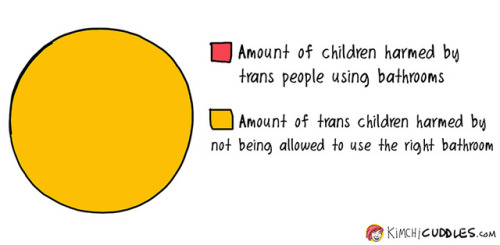(via Https://www.youtube.com/watch?v=RXAB7hJB67E)
(via https://www.youtube.com/watch?v=RXAB7hJB67E)
More Posts from Leppercolony and Others

First-ever image of black hole captured by team of Harvard scientists an…

Jupiter’s Great Red Spot
A century-old storm in the upper atmosphere of Jupiter. This is the closest we’ve ever gotten to it. Juno was about 9000 km above the storm when this was taken.
(Image credit: NASA/AFP/Getty Images)
Meet the Thirteenth Doctor.
(via https://www.youtube.com/watch?v=hFgAqg09eGs)

This October, the Supreme Court will officially weigh in on whether transgender people can be provided legal protection on the basis of sex—and in doing so, could decide the fate of how women of all kinds must dress in workplaces everywhere.
Aimee Stephens had worked as a funeral director for R.G. & G.R. Harris Funeral Homes Inc. in Garden City, Michigan for six years when she was fired in 2013, after she began to wear women’s clothing to work. According to an ACLU brief submitted to the Court, she lost her job when she transitioned—without federal protection against anti-transgender discrimination, Stephens would have to rely on state law to protect her. However, Michigan doesn’t outlaw such an offense. The Equality Act currently waiting for movement past the House would establish this protection, but the greatest legal recourse Stephens has is Title VII of the 1964 Civil Rights Act. Her legal challenge against her old employer will determine whether transgender people will be protected from sex discrimination in the workplace, an issue that has been heavily debated for years.
Discrimination on the basis of sex is prohibited under Title VII of the 1964 Civil Rights Act. Numerous lower court rulingshave maintained that Stephens’ gender identity would be protected as it applies to “sex” under Title VII. But a Supreme Court ruling in Stephens’ favor would set that precedent at the highest level of our nation’s judiciary, establishing a landmark ruling for the transgender civil rights movement. Trans rights ought to be meaningful enough on their own to merit public concern, but it’s worth noting that government-sanctioned discrimination against trans Americans at work would have severe consequences for cis women, too.
If the conservative-majority Supreme Court rules against Stephens, the result would be devastating to the estimated 1.4 million trans people in the U.S.—particularly trans women of color, who are alreadyunemployed at four times the rate of the general population. Now imagine how the rule could be applied to all women: Stephens was fired for her supposed inherent inability to conform to her employer’s subjective perspective on what women at work should look like, so if the Supreme Court says that’s legal, every woman in the United States may then also be forced to conform to an employer’s subjective, stereotyped idea of how a woman should look at work if she wants to keep her job. Hopefully she doesn’t look too much like a man in the opinion of her employer. Title VII covers gender stereotyping—the case of Ann Hopkins, who was denied partner at her firm in the 1980’s, established that expanded understanding of the law. (Hopkins’ case was later cited by the Obama Administration as one of many rulings to support its move to clarify that gender identity is protected under Title VII as an aspect of sex.)
In an earlier, lower court hearing on this case cited by the ACLU, Stephens’ employer, funeral home owner Thomas Rost testified that he has “yet to see a man dressed up as a woman that I didn’t know was not a man dressed up as a woman,” explaining that trans women’s supposed inability to look like women makes it impossible for such a person to meet the standards of his business’s dress code for female employees. “There is no way that… [Ms. Stephens] would be able to present in such a way that it would not be obvious that it was [a man],” Rost testified.
ACLU staff attorney Chase Strangio, a central figure in the legal battle for trans rights, brought up on Twitter this week, a ruling against Stephens would enable “employers to lawfully force women to wear skirts to work.”
“This case could turn back the clock on equality for everyone, not just LGBTQ people,” Strangio told VICE. The implication: This precedent could pave the way for employers to enforce archaic gendered dress codes akin to those of the 1950s, or whatever fits their expectations of gender expression. The Funeral Home claims that any prior ruling prohibiting sex-stereotyping is irrelevant because those rulings “don’t apply to trans people,” and says that “a trans woman like Ms. Stephens could never meet a gendered dress requirement—and therefore never fit into the workplace generally,” Strangio explained.
Follow that logic to its end. If the Supreme Court agrees, it will have established precedent that employers are allowed to make up their own gender-specific policies based on their personal beliefs about how men and women should look and behave. “The Court is poised to make a critical ruling on the nature of sex discrimination that will impact cis people, particularly cis women, in all aspects of life, particularly the workplace,” Strangio said.

There seems to be a lot of confusion on this issue, so here’s a helpful chart…










UNISEX WATCHES
Whatever I’m late anyways Watch
Stars Constellations
Cats Watch
Spiral Watch
Eiffel Tower Watch
Who cares I am late anyways Watch
Mandala Watch
Cat With Glasses Watch
Solar System Watch
Phases Moon Watch
Solar System: Things to Know This Week
Jupiter, we’ve got quite the photoshoot planned for you. Today, our Juno spacecraft is flying directly over the Great Red Spot, kicking off the first-ever close-up study of this iconic storm and passing by at an altitude of only 5,600 miles (9,000 kilometers). In honor of this historic event, below are 10 things to know about the planet’s most famous feature.

1. A Storm That Puts Others to Shame
The Great Red Spot is a gigantic, high-pressure, ancient storm at Jupiter’s southern hemisphere that’s one of the longest lasting in the solar system. It’s so large, about 1.3 Earths could fit inside of it. And you can bet you’ll get swept away—the storm’s tumultuous winds peak at about 400 mph.
2. How Old Is It?
The Great Red Spot has been swirling wildly over Jupiter’s skies for the past 150 years—maybe even much longer. While people saw a big spot on Jupiter when they started stargazing through telescopes in the 1600s, it’s still unclear whether they were looking at a different storm. Today, scientists know the Great Red Spot has been there for a while, but they still struggle to learn what causes its swirl of reddish hues.

3. Time for That Close-Up
Juno will fly over the Great Red Spot about 12 minutes after the spacecraft makes the closest approach to Jupiter of its current orbit at 6:55 p.m. on July 10, PDT (9:55 p.m. on July 10, EDT; 1:55 a.m. on July 11, Universal Time). Juno entered orbit around Jupiter on July 4, 2016.
4. Oh, So Mysterious
Understanding the Great Red Spot is not easy, and it’s mostly Jupiter’s fault. The planet a thousand times as big as Earth and consists mostly of gas. A liquid ocean of hydrogen surrounds its core, and the atmosphere consists mostly of hydrogen and helium. That translates into no solid ground (like we have on Earth) to weaken storms. Also, Jupiter’s clouds make it hard to gather clear observations of its lower atmosphere.

This false-color image of Jupiter was taken on May 18, 2017, with a mid-infrared filter centered at a wavelength of 8.8 microns, at the Subaru Telescope in Hawaii, in collaboration with observations of Jupiter by NASA’s Juno mission. Credit: NAOJ/NASA/JPL-Caltech
5. Help From Hawaii
To assist Juno’s investigation of the giant planet’s atmosphere, Earth-based telescopes lent their helpful eyes. On May 18, 2017, the Gemini North telescope and the Subaru Telescope—both located on Hawaii’s Mauna Kea peak—simultaneously examined Jupiter in very high resolutions at different wavelengths. These latest observations helped provide information about the Great Red Spot’s atmospheric dynamics at different depths and at other regions of Jupiter.
6. Curious Observations
Observations from Subaru showed the Great Red Spot “had a cold and cloudy interior increasing toward its center, with a periphery that was warmer and clearer,” said Juno science team member Glenn Orton of our Jet Propulsion Laboratory, Pasadena, California. “A region to its northwest was unusually turbulent and chaotic, with bands that were cold and cloudy, alternating with bands that were warm and clear.”

This composite, false-color infrared image of Jupiter reveals haze particles over a range of altitudes, as seen in reflected sunlight. It was taken using the Gemini North telescope in Hawaii on May 18, 2017, in collaboration with observations of Jupiter by our Juno mission. Credits: Gemini Observatory/AURA/NSF/NASA/JPL-Caltech
7. Hot in Here
Scientists were stumped by a particular question: Why were the temperatures in Jupiter’s upper atmosphere comparable to those found at Earth, even though Jupiter is more than five times the distance from the sun? If the sun isn’t the heat source, then what is? Turns out, the storm in the Great Red Spot produces two kinds of turbulent energy waves that collide and heat the upper atmosphere. Gravity waves are much like how a guitar string moves when plucked, while acoustic waves are compressions of the air (sound waves). Heating in the upper atmosphere 500 miles (800 kilometers) above the Great Red Spot is thought to be caused by a combination of these two wave types “crashing,” like ocean waves on a beach.

8. Color Theory
Scientists don’t know exactly how the Great Red Spot’s rich colors formed. Studies predict Jupiter’s upper atmosphere has clouds consisting of ammonia, ammonium hydrosulfide, and water, but it’s still unclear how or even whether these chemicals react. “We’re talking about something that only makes up a really tiny portion of the atmosphere,” said Amy Simon, an expert in planetary atmospheres at NASA’s Goddard Space Flight Center in Greenbelt, Maryland. “That’s what makes it so hard to figure out exactly what makes the colors that we see.” Over at NASA’s Jet Propulsion Laboratory in Pasadena, California, researchers concluded that the ruddy color is likely a product of simple chemicals being broken apart by sunlight in the planet’s upper atmosphere. “Our models suggest most of the Great Red Spot is actually pretty bland in color, beneath the upper cloud layer of reddish material,” said Kevin Baines, a Cassini scientist at JPL.
9. Been There, Haven’t Seen That
In January and February 1979, NASA’s Voyager 1 spacecraft zoomed toward Jupiter, capturing images of the Great Red Spot during its approach. Still, we’ve never been as close as we’re about to get during Juno’s flyover on July 10.

10. Simply Beautiful
This image of a crescent Jupiter and the iconic Great Red Spot was created by a citizen scientist, Roman Tkachenko, using data from Juno’s JunoCam instrument. JunoCam’s raw images are available here for the public to peruse and enhance.Want to learn more? Read our full list of the 10 things to know this week about the solar system HERE.
Make sure to follow us on Tumblr for your regular dose of space: http://nasa.tumblr.com
